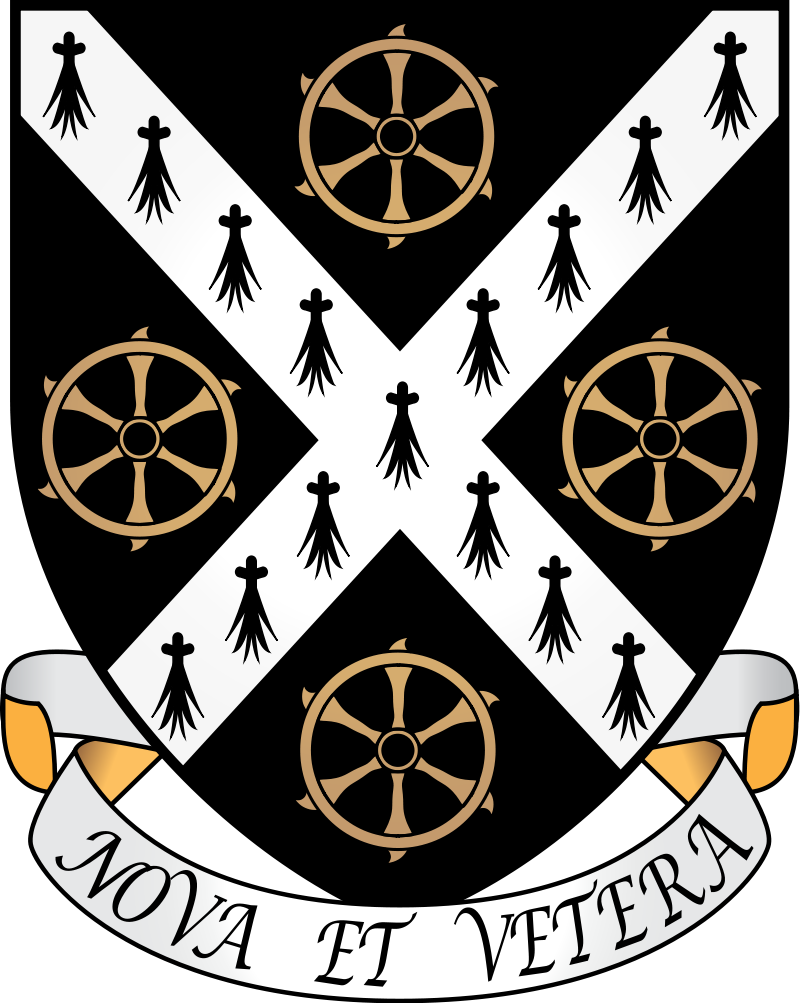The question as to why so many of the Government’s top brass has come from the esteemed colleges of Oxford has long been debated. In the second series of the much-loved 80s show Yes Minister, a debate arises between Jim Hacker MP and Bernard Woolley as to why they had two really good roads to Oxford before any to Southampton and Dover. The answer? Simple, according to Woolley; “Nearly all our permanent secretaries went to Oxford, Minister.”
This, to me, can also translate word-for-word onto the unique relationship between Oxford as a university and Prime Minister. There is something abstract, something metaphysical, about Oxford’s ability to draw in undergraduates, chew them up, and spit them out as graduates ambitious for a career in politics at all levels. Indeed, most general-election winning leaders since World War Two have at one time eaten in Halls, attended a College bop, maybe even pulled a few all-nighters to meet that pesky essay deadline. Even Tony Blair, deemed in 1997 to be a “breath of fresh air” (not my words) in British politics, read Jurisprudence in the musky halls of St. John’s College, graduating with a second-class honours in 1975. Out of the 57 heads of government since the 18th century, 30 have been educated at Oxford. Going back to the time of Thatcher, the list goes something like this; Oxford, Oxford, Oxford, Oxford, Oxford, Edinburgh, Oxford, No University, Oxford. This begs the question: why? What is it about this university that takes undergraduates and turns them into material worthy for the job of Prime Minister, debatably?
The first potential reason can be none other than the historical background of the figures that come to prominence as Prime Minister. With few exceptions, most offerings for the role of PM proved to be male, pale, and perhaps a little stale. Most were educated privately in settings such as Eton, Harrow, Winchester, Fettes, Haileybury: it’s hard for students to pass through such hallowed institutions and not come out with an in-built notion of self-confidence and the impetus that they will go far in life. As someone fortunate enough to attend private school for Sixth Form, it is undeniable that such institutions endow their male alumni with more than A-levels and a liking for Schöffels: throughout my two years there, I saw astoundingly mediocre lads transformed into bolshy, strong-willed ‘men’ who thought they were God’s great gift to earth. To put it short and sweetly; it’s pure arrogance, manifested in human form. I’m sure there are some classmates of Boris Johnson that would say the same thing. Such arrogance is even captured in political zeitgeisty show The Thick of It, in which lovable antihero Malcolm Tucker admonishes junior adviser Ollie Reeder in his gloriously distinct manner; “Feet off the furniture you Oxbridge ****, you’re not on a punt now.” More than once has the show proven to be more on-the-pulse politically, despite being written almost two decades ago, and I cannot help but feel as though it captured this feeling perfectly.
Maybe, it was the change in educational philosophy, and the creation of the notorious degree of Politics, Philosophy, and Economics? Admittedly, not all recent candidates for the top job have read for a degree in this field. Johnson infamously read for a degree in Classics, while May studied Geography at St Hugh’s – an apt subject to choose for a college so far out you’d need a map just to navigate your way to lectures.
How did PPE as we know it come about? It’s undeniable that the World Wars changed society; while changing the world as was known at the time, there was also a noted change in the approach to educating the ‘generation of tomorrow.’ Out went the notions of Classical education – previously viewed as the only education a ‘gentleman’ received to prepare him for the world – and in came a degree Dons at the time believed would equip the leaders of tomorrow with the knowledge and skills needed to ‘lead civilisations.’ Gone was the education centred around civilisations of two millennia ago, and in with teachings of philosophy, political thought, and economics. Classics was not the education deemed adequate to cope with wars, governance, global finance, the emergence of media, and revolutions across the globe; a more modern, multi-disciplinary degree was needed. So, the creation of the first modern-day course was complete, and despite other Universities including Cambridge adopting courses with similar outlines, Oxford’s PPE course is still seen as the gold-standard degree for those that flatter themselves with the same overconfidence shown by David Cameron. Even a centenary after its creation, PPE is still viewed as the degree choice of the ambitious – perhaps not the competent though, if the short records of Liz Truss (PPE, Merton, 1993) and Rishi Sunak (PPE, Lincoln, 1998) are anything to go by. Even if politics isn’t your ambition, the career still serves as a springboard into the civil service, a career in diplomacy, and even journalism – the opportunities are limitless, and all beneficial areas to have contacts in for the up-and-coming parliamentarian. Hustling your way to 500+ LinkedIn connections by the age of 25 has never been easier.
When all is said and done, however, I’m not entirely sure we can blame the state of the country on one particular choice of degree, tempting though it may be. My degree may not make me a ‘proper’ Classicist to some, but I still feel rightfully annoyed whenever I hear people say the issue with Boris Johnson is that ‘he studied Classics… you know.’ There are arguably more pressing issues with him as a character, and we’re actually quite a civilised bunch, thank you very much. There seems to be no set degree that you *must* study in order to reach the lofty heights of Whitehall; many notable PMs do not share a uniting subject between them. Margaret Thatcher, for example, studied Chemistry, which isn’t the most obvious degree choice for those wishing to enter Parliament. Perhaps, the answer has to lie elsewhere.
There is another notorious area of Oxford that can perhaps be responsible – take the blame, even – for the disproportionately high number of Oxonian Prime Ministers. As someone who has only set foot in the notorious claret-coloured building once, has the dreaded Oxford Union played a role? What is someone with buckets of self-confidence, a desire for “playing devil’s advocate,” and a penchant for honing their // debating skills supposed to do with their evenings once they’ve matriculated? It is on those well-trodden planks of the debating chamber that the likes of David Cameron, H. H. Asquith, Edward Heath, and Jacob Rees-Mogg have all stood and debated a wide range of topics. Yes, Cambridge has a debate Union that’s just as controversial as ours, and other universities have debating societies, but it comes down once again to the idea that we did it first – and because of this, we inherently have the head-start over all other societies in terms of prestige, ability, and notoriety. It’s a place to hone skills, and much like other opportunities, a chance to hobnob and network with people similarly vying for the same roles. Financial Times Journalist Simon Kuper, who studied at Oxford at the same time as Cameron and Johnson, clearly highlights the link between the politics of the Union, the politics in Parliament, and the tactics used in the EU referendum debate. It’s “a kind of children’s parliament that organises witty debates,” he writes, with Westminster essentially being an elitist private-school club where the likes of Johnson and Cameron would feel at home. Was the Union just another stepping stone to them? Potentially. It does appear that the Union is a self-fulfilling prophecy; you hone your skills within their walls, you perform well, you make the contacts you need to consider Politics as a viable option, and before you know it you’re sitting comfortably, both figuratively and literally. Those plush, green-leather benches in the Commons are proven comfortable places for MPs to recline during debates, and the £84k a year salary plus more than generous pension scheme is certainly enough to heat all the homes you might come to own. If conducted correctly, a career in politics can last an entire career lifespan; even done incorrectly, chances are with the current state of affairs you’ll still find yourself well-off. Or, failing that, in the I’m A Celebrity jungle.
There is one last point that I think supersedes both the Union, the private schooling, and the inflated egos, and might be viewed as a bit of a curveball; that is, the prominence of political associations and organisations. Once again, we come to the familiar argument of yes, other universities have political societies, but Nothing Compares to Us, to paraphrase Sinead O’Connor. A weird flex it may be, but our University Conservative Association (OUCA), is the largest student party-political society in Europe according to their website. Similarly, the University Labour Club (OULC) describe themselves as “the largest and oldest Labour club in the country,” after celebrating their centenary in 2019. Starting to notice a trend here? Maybe Oxford’s age and illustrious history of alumni attracts those who get their kicks from walking through the same halls as the dead white men they’ve spent their lives idolising? Who knows; maybe they’re seeking out the ghost of Margaret Thatcher in the hope she’ll imbibe them with the knowledge of how to deal with the EU; fleeing with the knowledge before she can steal their milk.
Both societies host events such as Port and Policy, OUCA’s weekly gathering to discuss current policy ideas, while OULC’s Beer and Bickering provides a chance for friendly debate on motions such as ”Should we be terrified of the Tories?” For fear of losing my impartiality in this article, I feel like I should refrain from answering that; but both societies provide members with the chance to debate in a less raucous manner. In short, the perfect place for those just starting out on the debate circuit.
Networking at the Union is certainly interesting, but for the most part that is only among other students; sure, some of them might have some family connections that can help them along, but if they’re ‘looking after themselves first’ (to quote the Iron Lady), then the chances of them sharing such connections with others is slim. Contrastingly, both societies have strong networking opportunities and crucial interaction with their ‘mother’ parties. OUCA’s trips to the House of Commons this term was arranged in collaboration with a current MP, and their London P&P events provide the perfect opportunity for alumni to wine and dine their way to several important connections. Considering names such as Cameron, May, Hague, Hunt, Rees-Mogg, Hannan, and Gove have all played a part in the history of the society, there is no telling the sort of political connections that can be made at their events. Labour’s networking focuses more on the tactical and practical; while introducing them to MPs during talks and canvassing opportunities, the Club also gives students the chance to acquire meaningful experience of public interaction. A skill of great importance to the budding parliamentarian, but an ironic stance for the Labour Club to take. If only someone had given Gordon Brown the same training before the 2010 election. Union membership is also costly; even the Lifetime Access Membership, which I’m eligible to receive, still costs more than my food budget for most of the term. Membership to both societies is much more accessible; £10 life membership for the Conservatives, and £15/£8 for Labour, the latter being an access membership. Such party-political organisations ultimately provide a more structured and more accessible route into politics for students. This seems like the most effective method to forge your political career; all the benefits of the networking and experience, but without the risk of embroiling themselves in major Union scandals that will haunt their future careers.
There are many other reasons that Oxford may be the breeding ground for future Parliamentary leaders, but those reasons are just about as strong as Matt Hancock’s for ditching his constituents to appear on a reality show. Thus, they won’t be discussed here.
Despite the tone I’ve taken occasionally in this article, I am in fact proud to say I attend this university. What doesn’t make me proud is the connection Oxford has to the Prime Ministers of the past decades. Disregarding the intrinsic links between Oxford and the Premiership, it is important to ask if we as an institution are proud to have these figures as our political leaders. We have Oxford graduates in economics who crashed the economy in the space of 44 days, making a mockery of the country globally. We have Oxford graduates who were supposed to be honest to voters, yet the real number of children they have goes unanswered. We have Oxford graduates who play fast and loose with the livelihoods of millions of people, putting more consideration on how their tax policy will impact those on £200,000 a year more than £20,000 a year.
What does it say about Oxford as a University for producing political leaders such as this? It should be no source of pride for us current students that Oxford has produced these people.
It can be easy to despair, but I find that there is light at the end of a tunnel. As Bob Dylan said in his 1964 song; the times, they are a changin’. Back when the current leaders were debating on the Union floor, frantically writing in the library, or sipping pints in the Chequers, even the mere idea of a program like UNIQ summer schools would have been mocked. Colleges did not have access and outreach departments; I imagine the only outreach Oxford considered was reaching out to Eton beaks to see how many were interested in applying that year. I’ve heard the phrase that “the 1970s and 1980s were different times” and they really were for Oxford. We live in a different Oxford to the University that shaped the Prime Ministers of recent decades.
I’d like to end with a quote from George Orwell that I feel sums up the way things will change in the future; “In Slough, Dagenham, Barnet, Letchworth, Hayes – everywhere, indeed, on the outskirts of great towns – the old pattern is gradually changing into something new…. In those vast new wildernesses of glass and brick the sharp distinctions of the older kind of town… no longer exist. To that civilization belong the people who are most definitely of the modern world… they are the indeterminate stratum at which the older class distinctions are beginning to break down.” I wholly agree with what Orwell postulates here – modern students, from modern towns, with modern outlooks will be the future – but I still don’t quite see my home town of Basildon producing any heads of government any time soon.
Maybe there will still be links between Oxford and the role of Prime Minister in years to come, but I hope to see a leader who represents the Oxford I know today. The ones where the students are conscious of those around them. Ones that have self-belief because of their own abilities, and not because they were brought up with the notions of inherent superiority over others because of their family, background, schooling. In short, Oxford needs to produce a Prime Minister that has the people’s interests at heart, and not those of their elite friends or their own vested interests in advancing their career. Whether we can produce such a leader is unknown, but a girl can dream.
Who knows? Maybe the person reading this right now will one day rise from their bench, and take to the Dispatch box. I doubt Oxford has seen its last PM just yet.



















